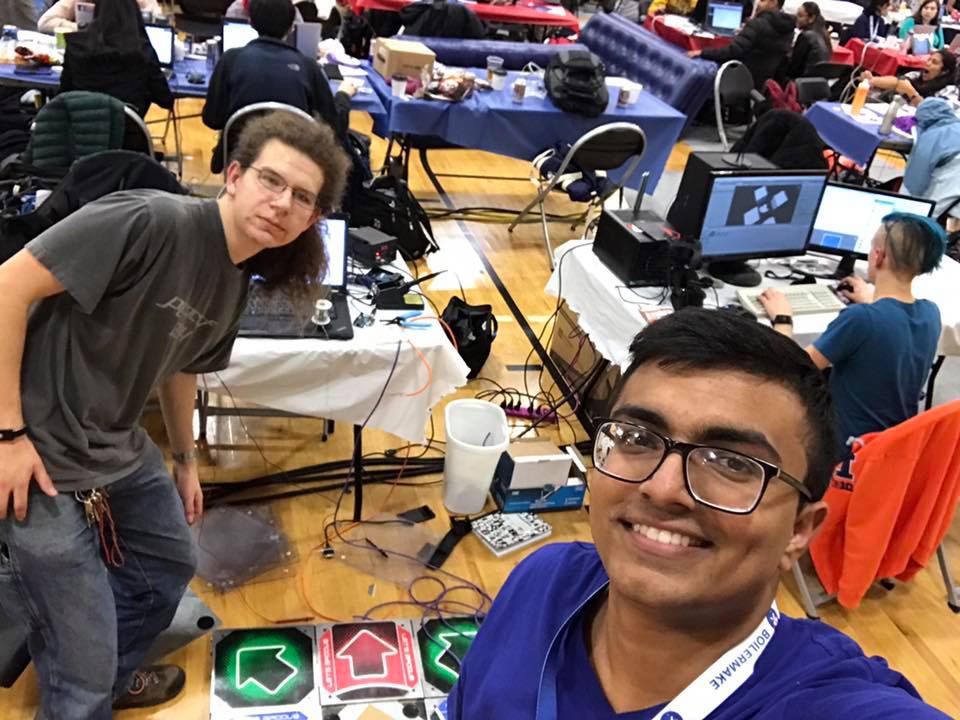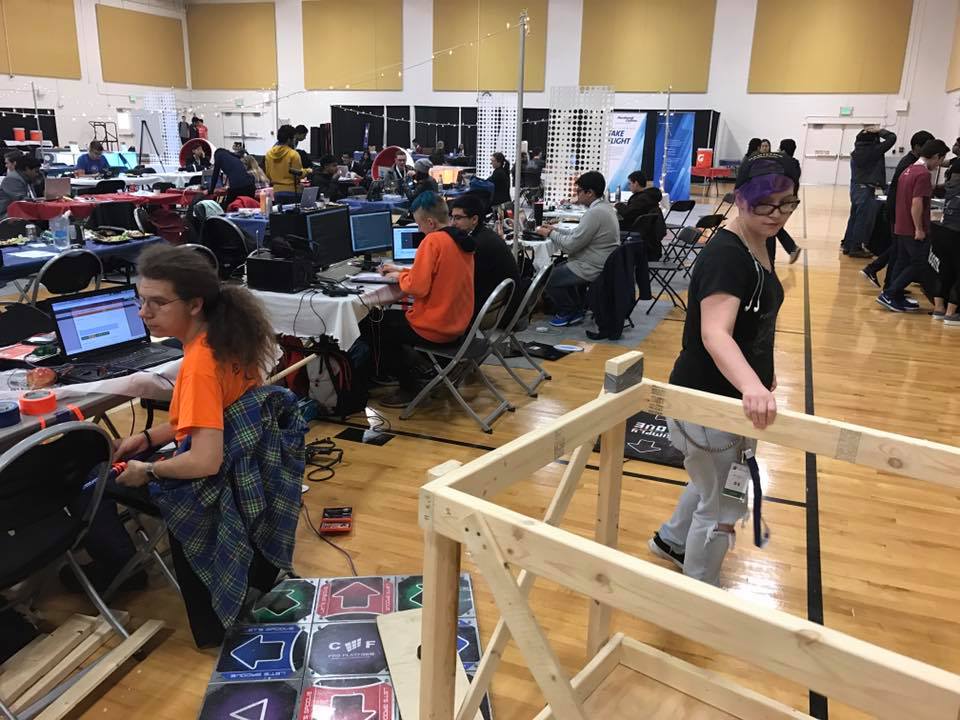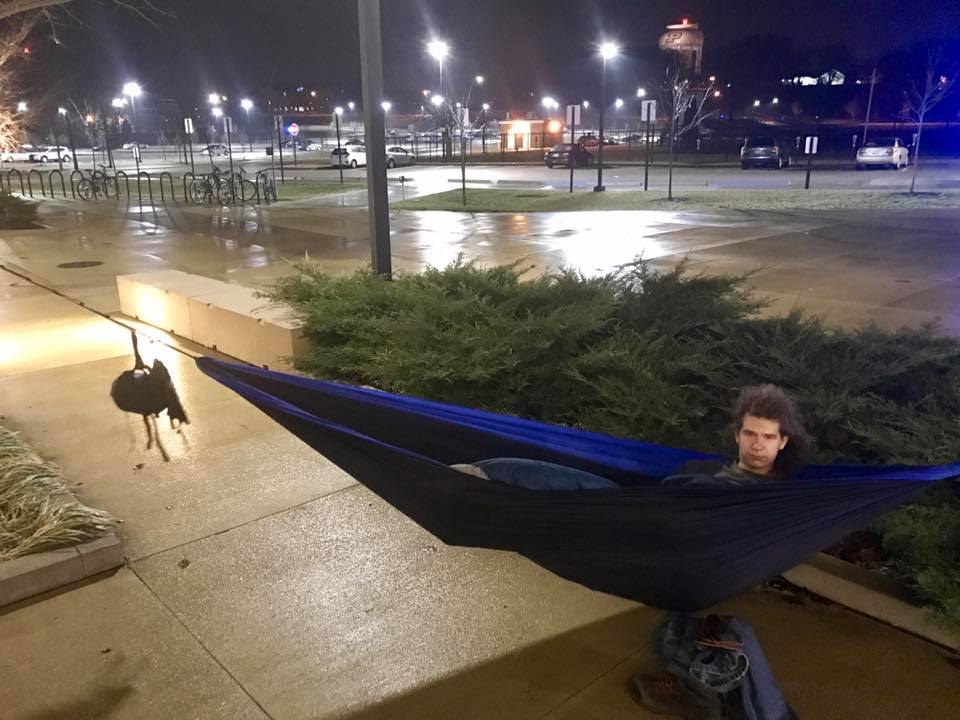3rd Place overall, Boilermake 4: DDR-VR
28 Jun 2017 | Virtual Reality Hackathon UnityThe weekend of January 21st, from Friday night to Sunday afternoon, I, along with 500 others, participated in Boilermake, Purdue University’s annual Hackathon. I was in a team with 3 other University of Illinois students; 2 Computer Engineers and 1 Materials Scientist.
We won 3rd place overall with our project DDR-VR. Most people have seen the arcade game Dance Dance Revolution; the player steps onto a mat with various arrows on it, and tries to step on them as arrows fly down the screen. We implemented the game as a 360 degree experience in VR; there were 4 screens, and every so often players would have to turn to face a new screen.
Here are some of my thoughts, observations, and experiences.
We arrived at the Hackathon on Friday night; I came on the University bus and reserved us some prime tables and chairs, and checked out an Oculus Rift. The rest of my team came in a car; this allowed them to bring along the DDR pad ($35 on craigslist) and the gaming computer we needed to power the VR experience.

We immediately got to work stripping down, cleaning, and “penny modding” the DDR board, but it was simply too unreliable to play a game with. Thankfully, one of my teammates reached out to the Purdue University Dance Game club, and we were able to borrow a much more advanced (and shiny and expensive and new) game board.

In the end, the hardware?s comprised of a Precision Dance Pad, and some 2-by-4s we screwed together with a borrowed drill. The rest of the team actually made a 7am trip to the hardware store on Saturday morning while I attended a workshop.

The game has four playfields ? north, south, east, west ? and works by periodically disabling and re-enabling them. The player must turn to face the currently-active playfield.
We stumbled our way through Unity (first time using it!) over the weekend, starting with code from a rhythm game built by Josh Leland. We had to turn this into 4 different screens, make it work with the weird inputs from the dancepad, and make it work in VR. (and not look terrible). The software can load any simfile (the file format that holds DDR charts) after running it through a parser.
I don’t have a picture from the actual award ceremony, but we won 3rd place overall! We demo’d our system (wood crate and all) on the main stage of the award ceremony; we had a Purdue dance club member play the game!

